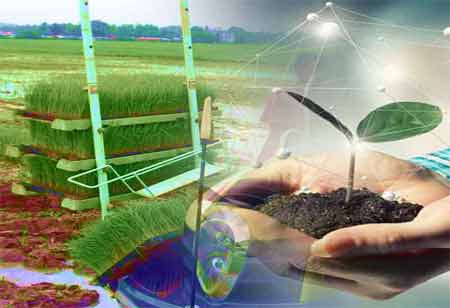Thank you for Subscribing to Agri Business Review Weekly Brief
Leveraging Water Management Solutions for Sustainable Agriculture
The agricultural industry benefits from sustainable measures by implementing IoT, GIS, drones, and precision irrigation to reduce water consumption and improve yield.

By
Agri Business Review | Wednesday, December 28, 2022
Stay ahead of the industry with exclusive feature stories on the top companies, expert insights and the latest news delivered straight to your inbox. Subscribe today.
The agricultural industry benefits from sustainable measures by implementing IoT, GIS, drones, and precision irrigation to reduce water consumption and improve yield.
FREMONT, CA: Research shows that the global agricultural sector draws on 70 percent of water reserves. Digitalizing agricultural processes supports farmers in sustainable farming. Digital adoption in the agricultural industry is driving changes in water footprint. Major companies are devising solutions in water-stressed regions, aiming to reduce water usage in some areas by 10 percent.
Freshwater reserves are diminishing with the growing population. Smart agricultural processes can reduce the agriculture industry's water footprint. The following technological solution is digitalizing the agricultural water supply chain.
Internet of things (IoT) and geographical information systems (GIS): Optimizing farm equipment and processes with IoT and GIS tracks crop health and soil condition through sensors. Alternate solutions to crop management regulate water consumption and maximize yield using limited quantities of water. IoT sensors regulate appropriate water usage by collecting and measuring soil, temperature, and humidity trends. GIS creates multiple layers of maps using moisture, topography, rainfall, and weather data. It identifies problem areas in soil composition and moisture levels. Planners can combine IoT and GIS applications and integrate them with other equipment to automate agricultural functions.
Precision irrigation: Precision irrigation reduces overall water consumption and enables site-specific nutrient uptake in plant roots. Farmers observe increasing yield and healthier soil. Developers are connecting IoT and GIS to precision irrigation technologies to automate a water irrigation system. Farmers can use drones to deliver water to inaccessible areas without setting up additional physical infrastructure to deliver water through traditional channels. Precision irrigation reduces water consumption and identifies water-scarce areas and soil saturation to deliver the correct quantity of water.
Predictive weather analytics: Weather analytics identify trends in weather forecasts for optimal water allocation to prevent overuse and crop risks. Analytics tools use data from satellite monitoring, on-field radars, AI, IoT, and ML. Sensors and weather equipment study the possibility of droughts, floods, rainfall, and temperature fluctuations. Restricting and segmenting water requirements improves yield, crop health, and resource allocation.
Water loss prevention technologies: Saving water from evaporation and leakages compliment other predictive and conservation tools. Cleaning and recycling water can increase water reserves for agriculture. Farmers are connecting IoT through the cloud for analytics, treatment, and maintenance of farm-suitable water.





